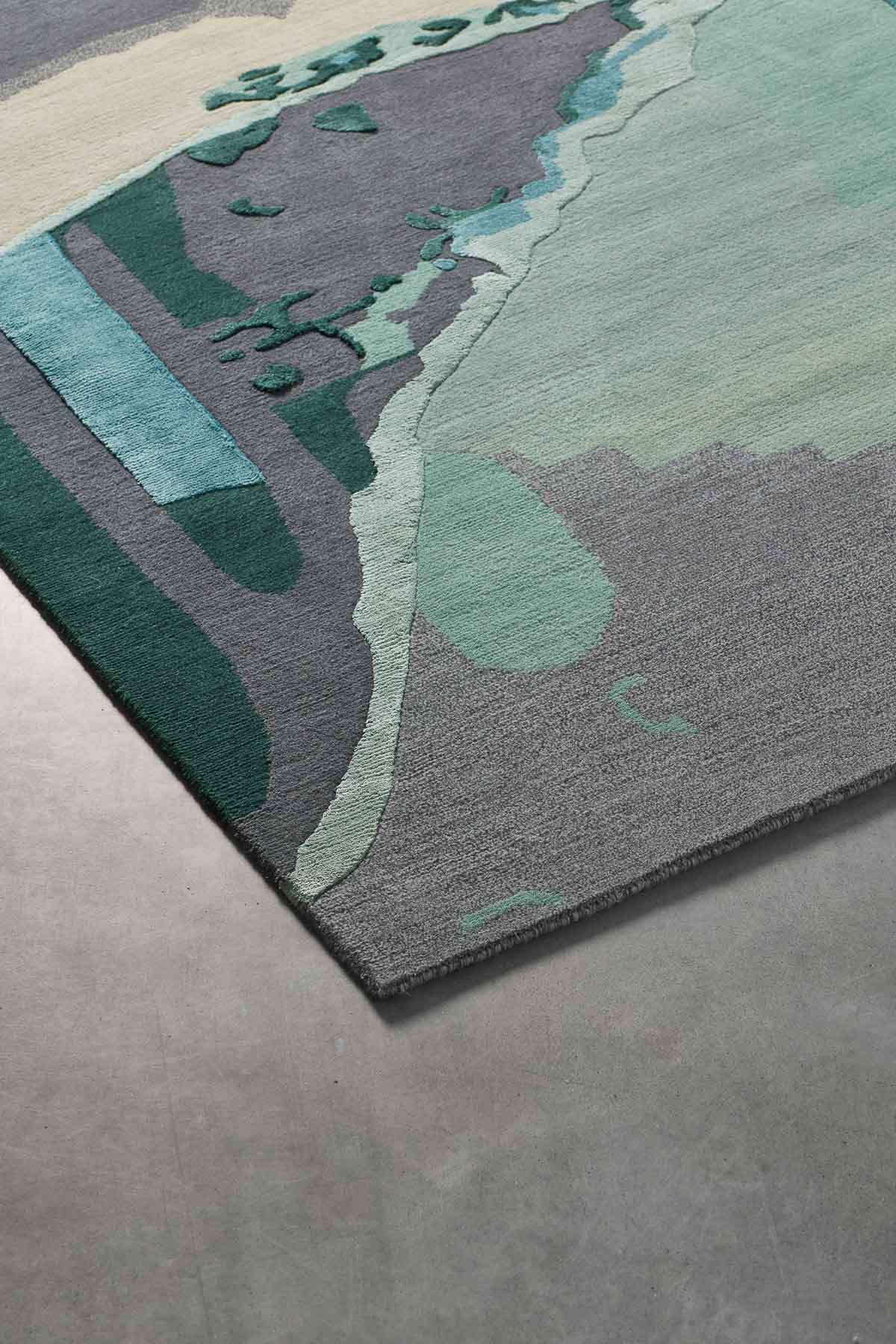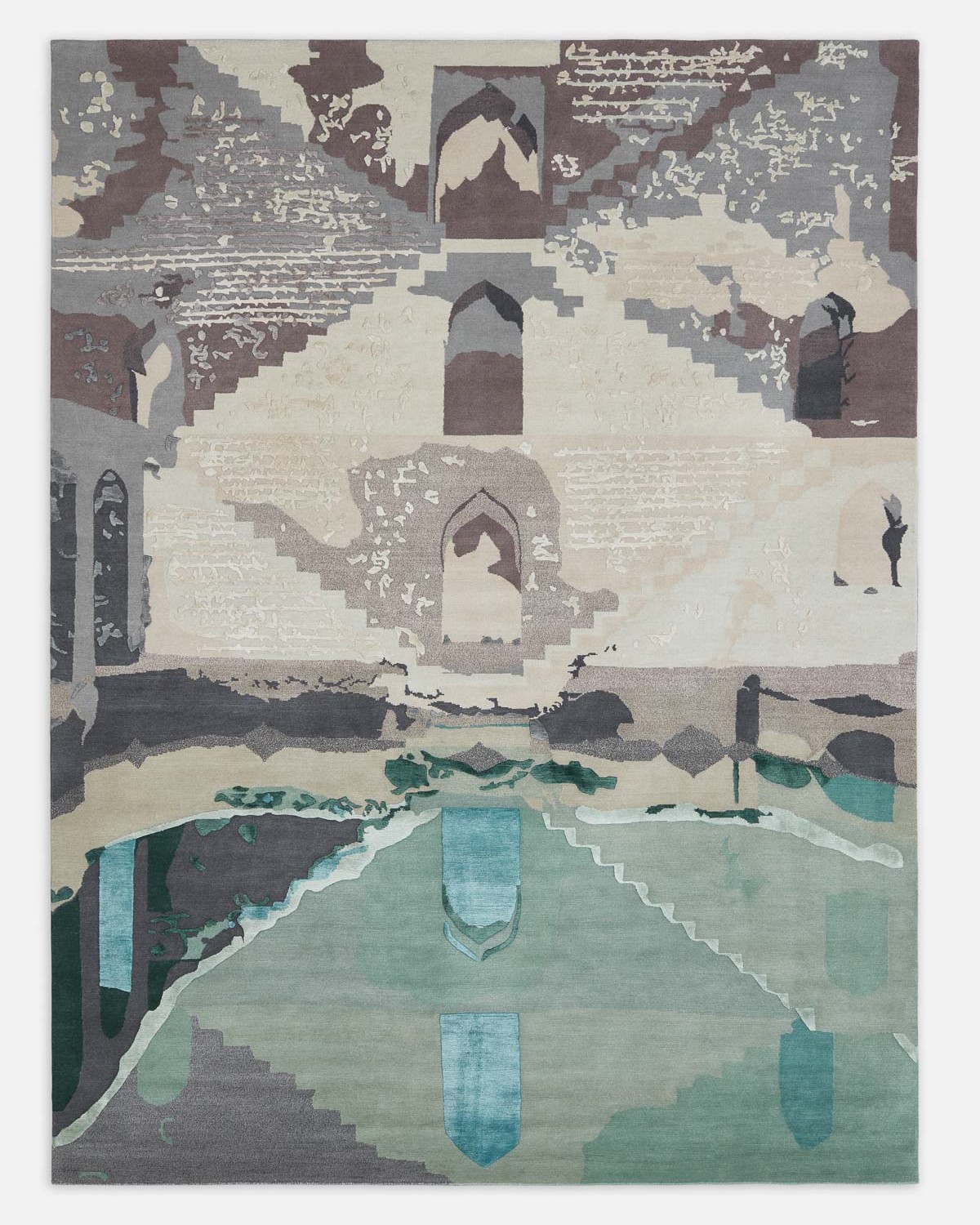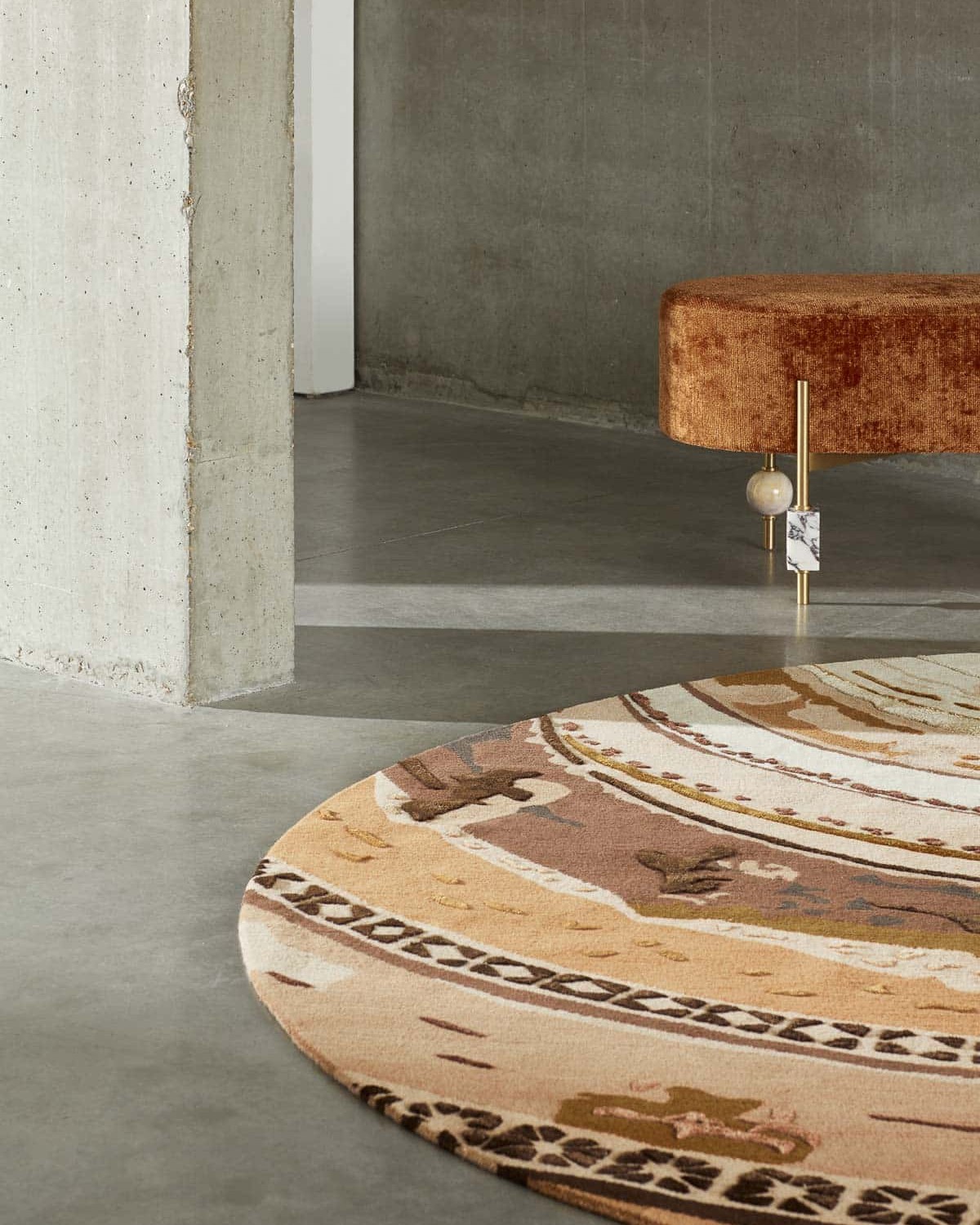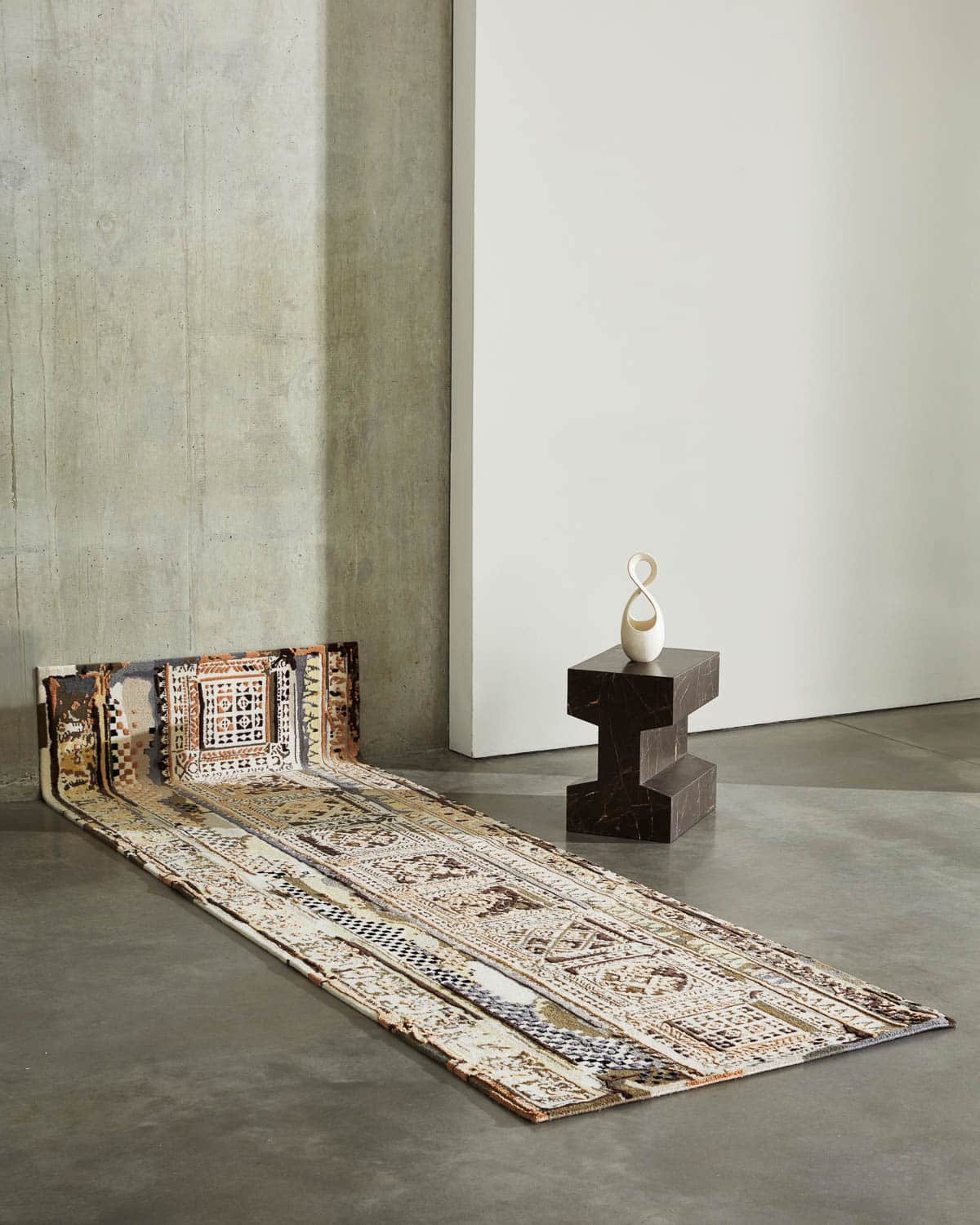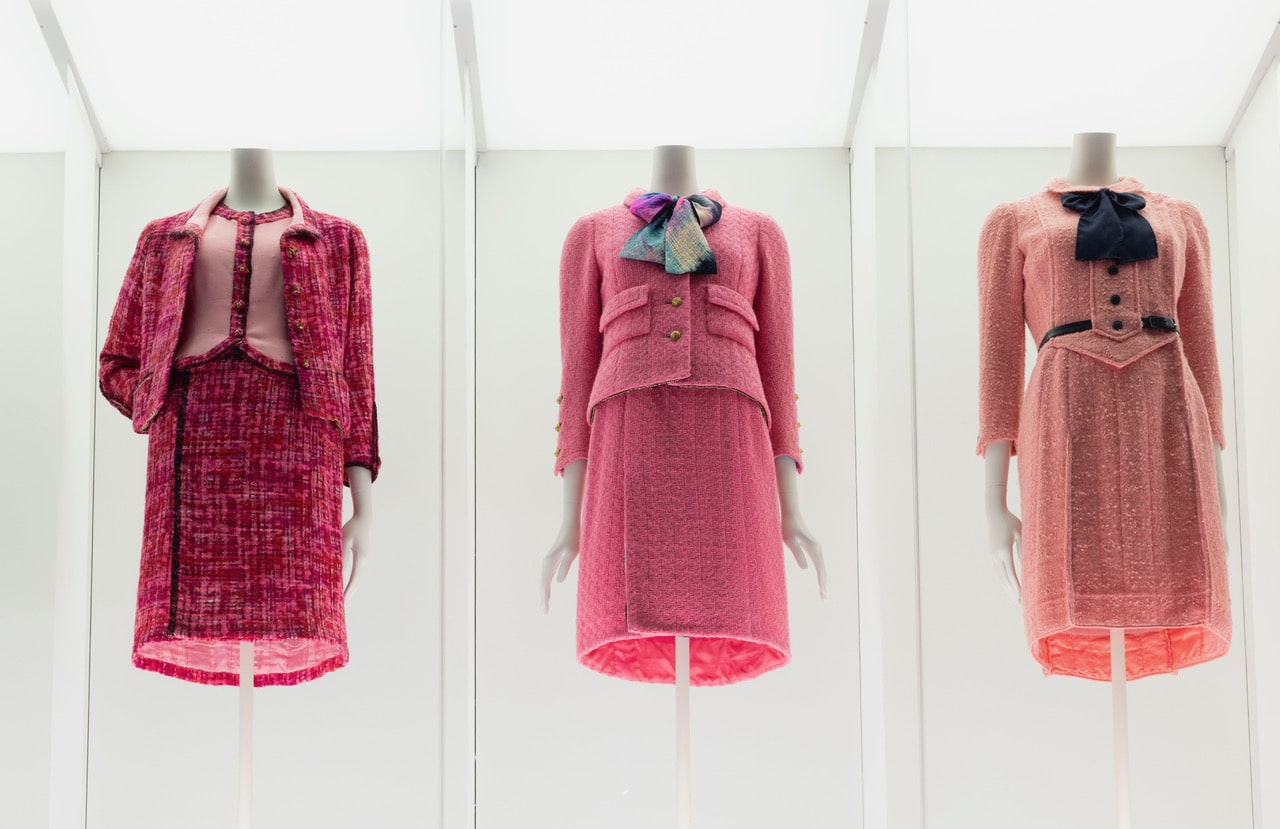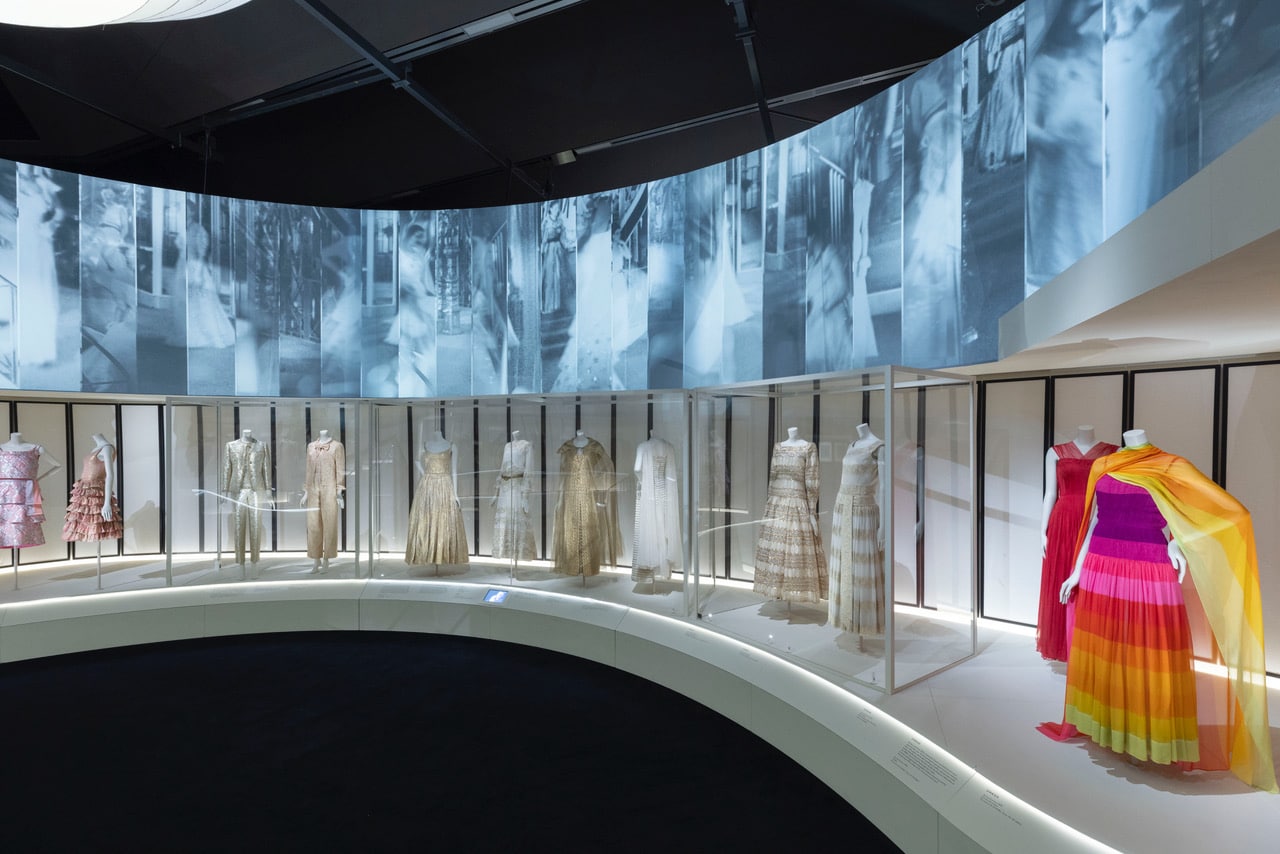AD India
Shalini Misra collaborates with cc-tapis on a rug collection inspired by Indian stepwells
You can view the full article by following the link below.
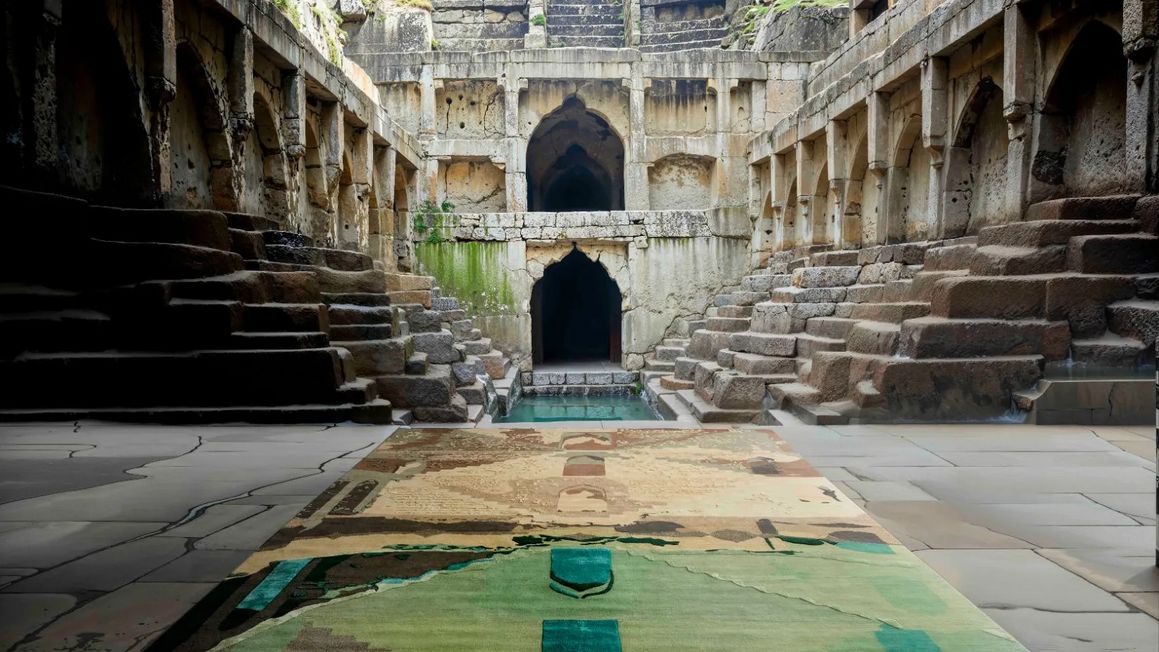
The term ‘wellness’ is used everywhere now, and while it’s wonderful that it’s getting so much attention, when it comes to our health and wellbeing we need to think beyond the latest trends and tap into our deeper ancestral knowledge. Humankind has known for aeons that light, fresh air, nature and calm are all essential to help life thrive.
It’s well known that our surroundings have an enormous impact on our mood, behaviour, and health, our team of interior designers at Shalini Misra always pays particular attention to our clients’ lifestyles, creating interiors that will improve their wellbeing – not just for winter months, but all year round.
Whether it’s an office, home or hotel, here are some design pointers that must always be considered:
Light & Air
Allow ample flow of natural light and air where possible or incorporate windows or bi-folding doors for increased ventilation. Seek out air purifiers to create a healthier living environment. Studies have shown that exposure to natural light can regulate our sleep-wake cycle and improve mood by boosting serotonin levels. Similarly, adequate ventilation is crucial for maintaining indoor air quality, reducing the risk of respiratory issues and allergies.
Feel the Rhythm
Harness the power of lighting to support circadian rhythms. By optimising natural daylight and complementing it with artificial lighting that mimics the changing qualities of sunlight, you can support your body’s natural rhythms and promote a sense of balance and vitality. For a calming and restorative space, make the most of daylight where possible, and choose lighting solutions that offer colour therapy. Different colours have been shown to evoke specific emotional responses and promote relaxation or stimulation.
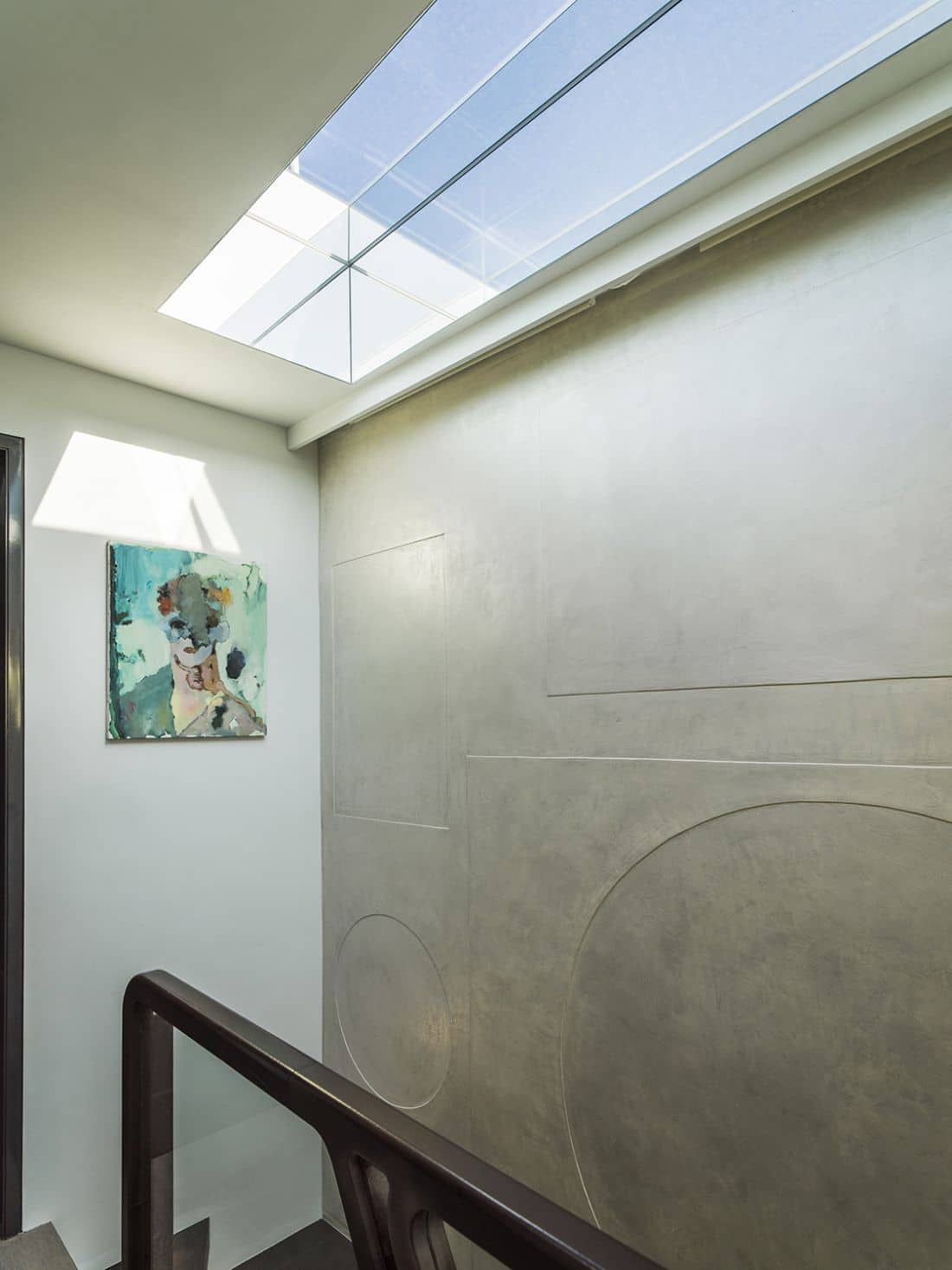
Plant Power
Introducing indoor plants into your living space not only adds a touch of greenery but also offers numerous health benefits. Plants are natural air purifiers, absorbing carbon dioxide and releasing oxygen, thereby improving indoor air quality. It’s been proven that simply being in the presence of plants can reduce stress levels and encourage feelings of calmness and wellbeing. To maximise the air-purifying effects of plants, consider investing in CO2-absorbing paints, which further contribute to a healthier indoor environment.
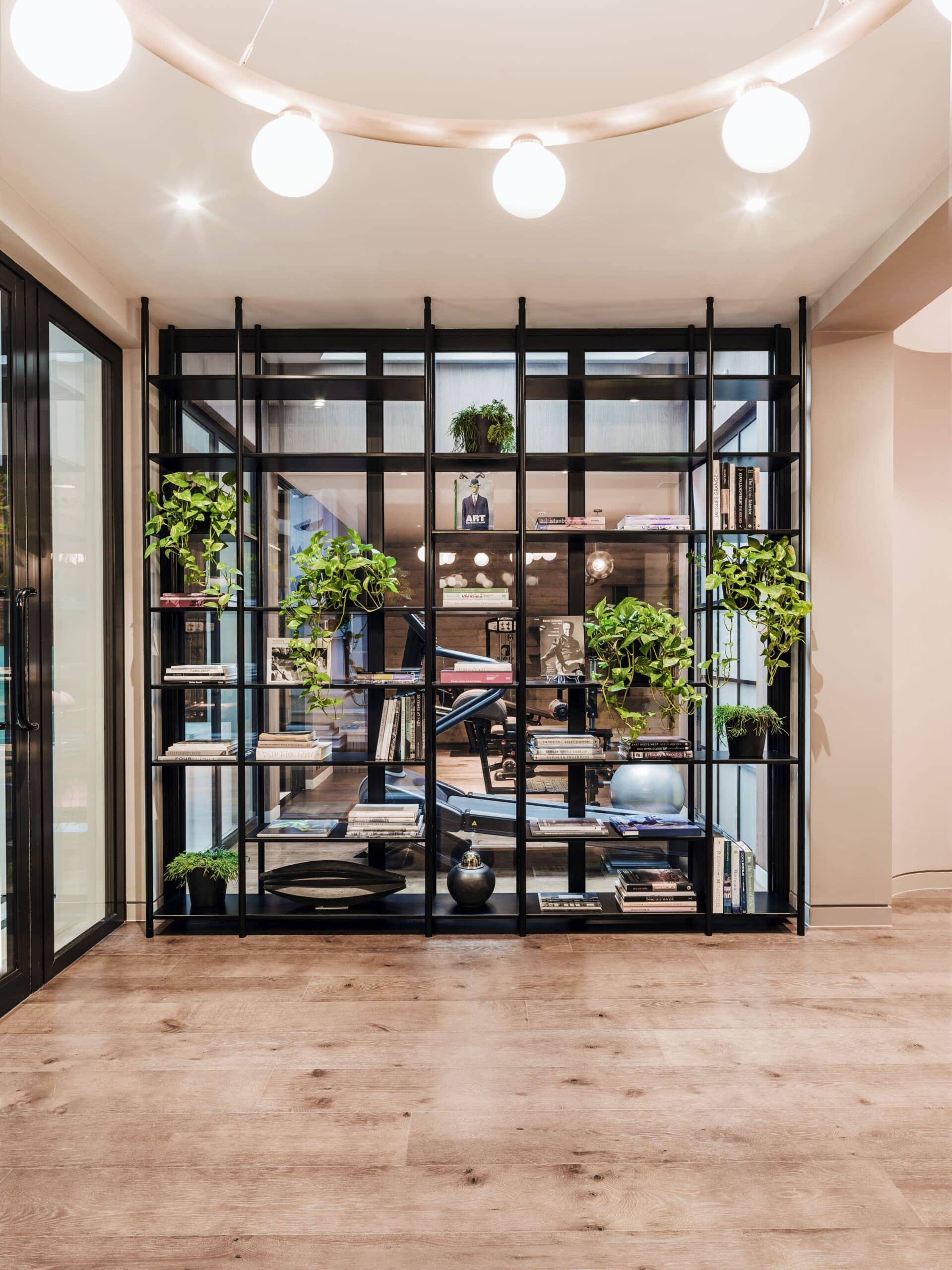
Focus Points
As our homes now double up as offices, it’s crucial to carve out a dedicated workspace to reduce stress and ensure a proper separation between work and personal life, avoiding the risk of burnout. Additionally, incorporating pockets of privacy within your home design provides opportunities for quiet reflection and relaxation, further supporting mental wellbeing.
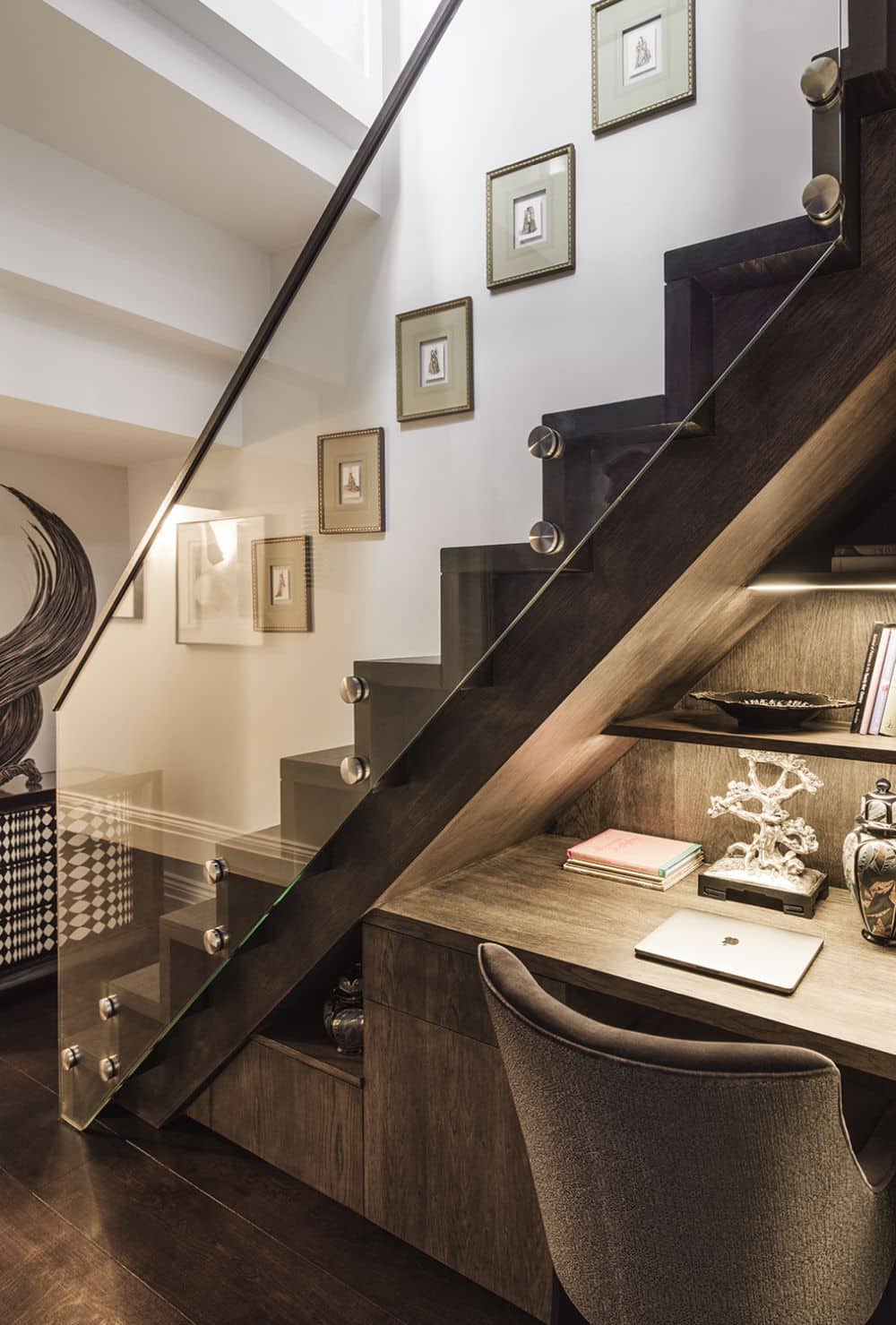
Peace & Quiet
Excessive noise can be detrimental to our mental and physical health, contributing to stress, sleep disturbances, and decreased productivity. By implementing sound-reducing solutions such as insulated underlay or acoustic wall coatings, you can minimise noise disturbances within your home and create a more peaceful and serene environment. This not only enhances overall wellbeing but also provides a conducive atmosphere for relaxation and concentration.
Well chosen sculptures and art accessories will add layers of depth and character. Opt for pieces whose stories resonate with you personally as well as considering their fit with the overall design theme. For those seeking to explore curated art options, Shalini Misra’s sister platform, Curio, offers an exceptional array of original works to choose from.
Get Smart
Embracing smart technology in your home can offer numerous benefits for your wellbeing. From monitoring indoor air quality to controlling lighting and temperature settings, smart devices can help optimise your living environment for comfort and health. Some devices even have features that can prevent illnesses by detecting and eliminating harmful germs and pathogens, providing added peace of mind and security for you and your family. Smart technology is also great for streamlining daily routines and creating a more efficient and health-conscious home.
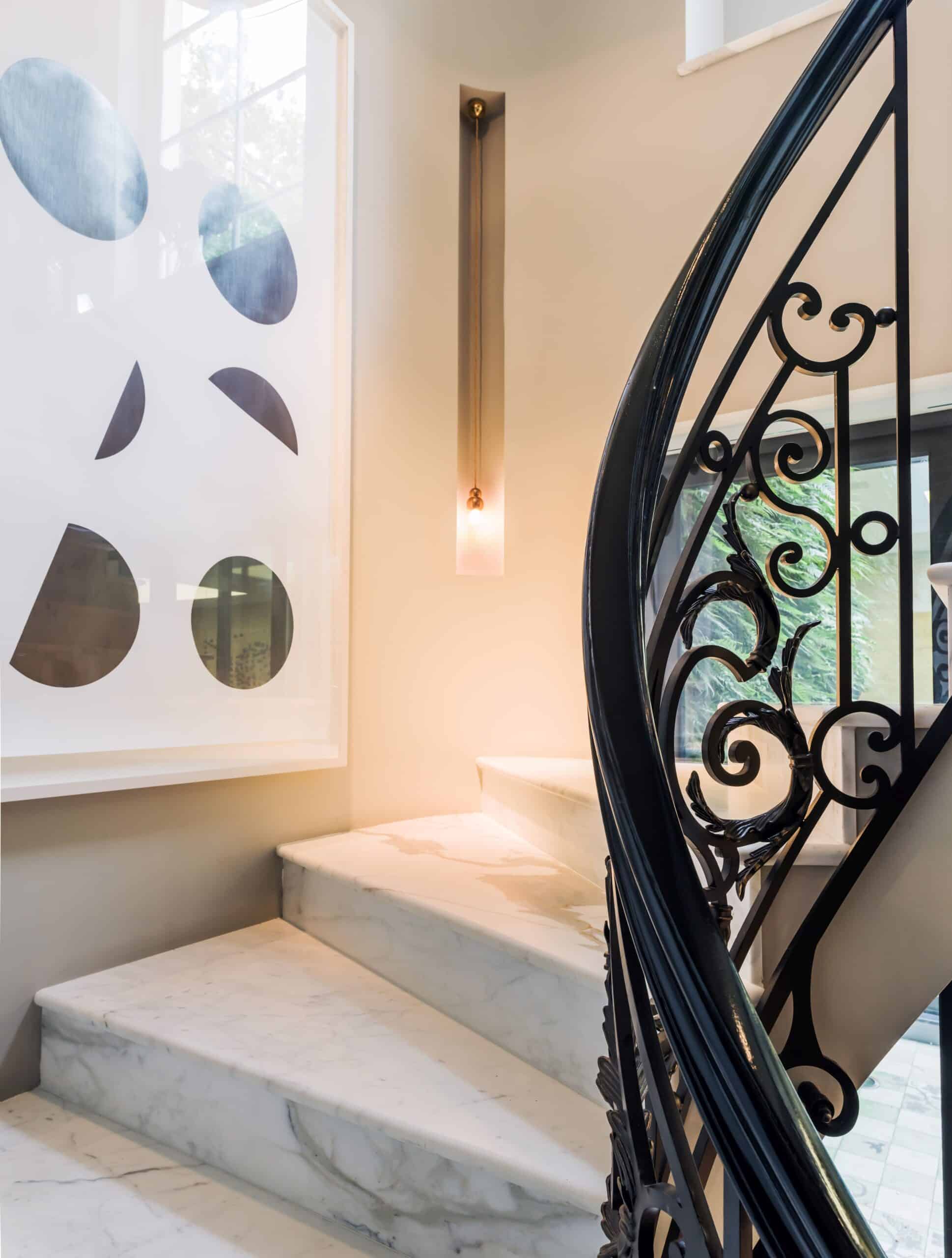
We hope these useful tips will not only inspire, fulfil, and invigorate your interiors, but also support your physical, emotional, and spiritual wellbeing – something we should all nurture.
February 21, 2024
AD Middle East
How To Decorate Your Home? This Thoughtfully Curated Townhouse Offers a Blueprint
You can view the full article by following the link below.
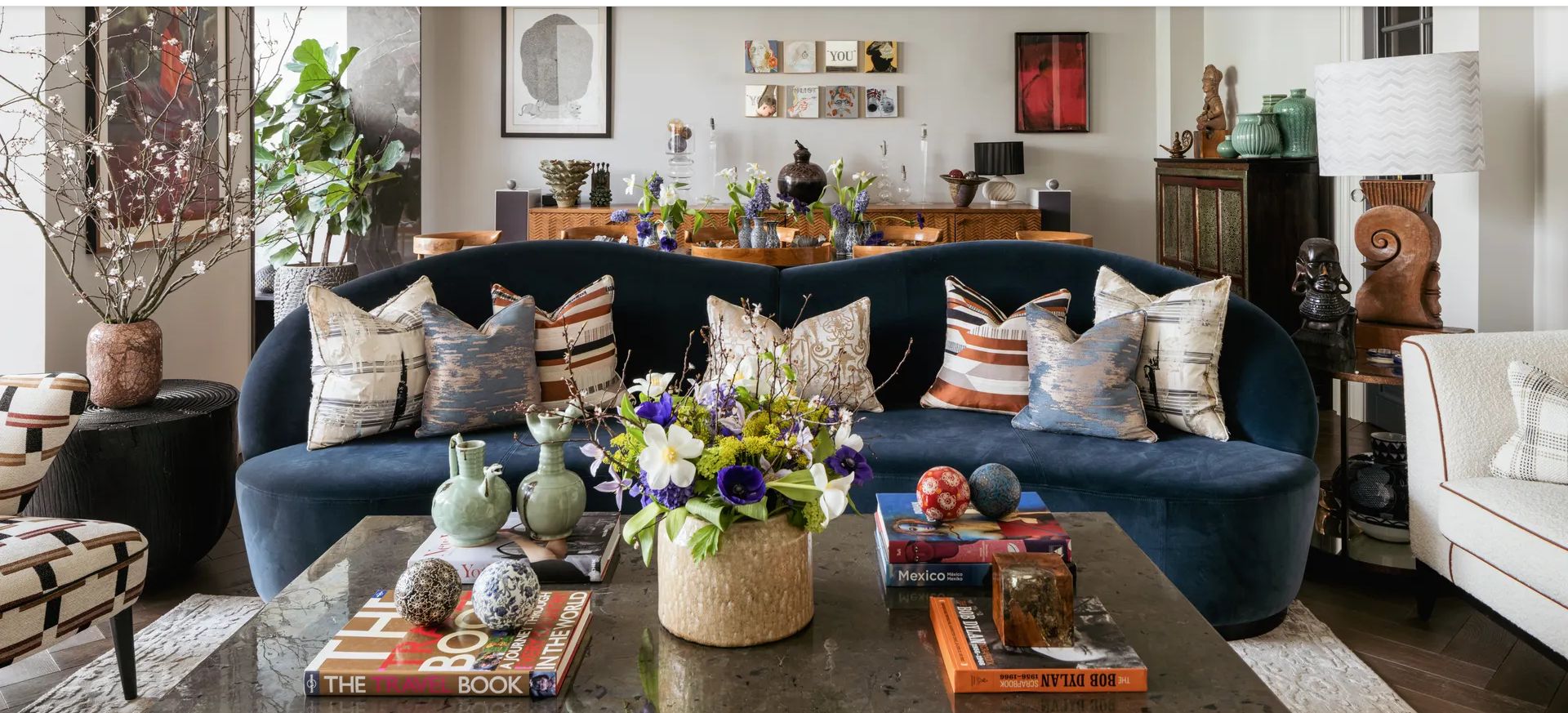
Wallpaper
India’s stepwells inspire Shalini Misra’s rug collection
You can view the full article by following the link below.
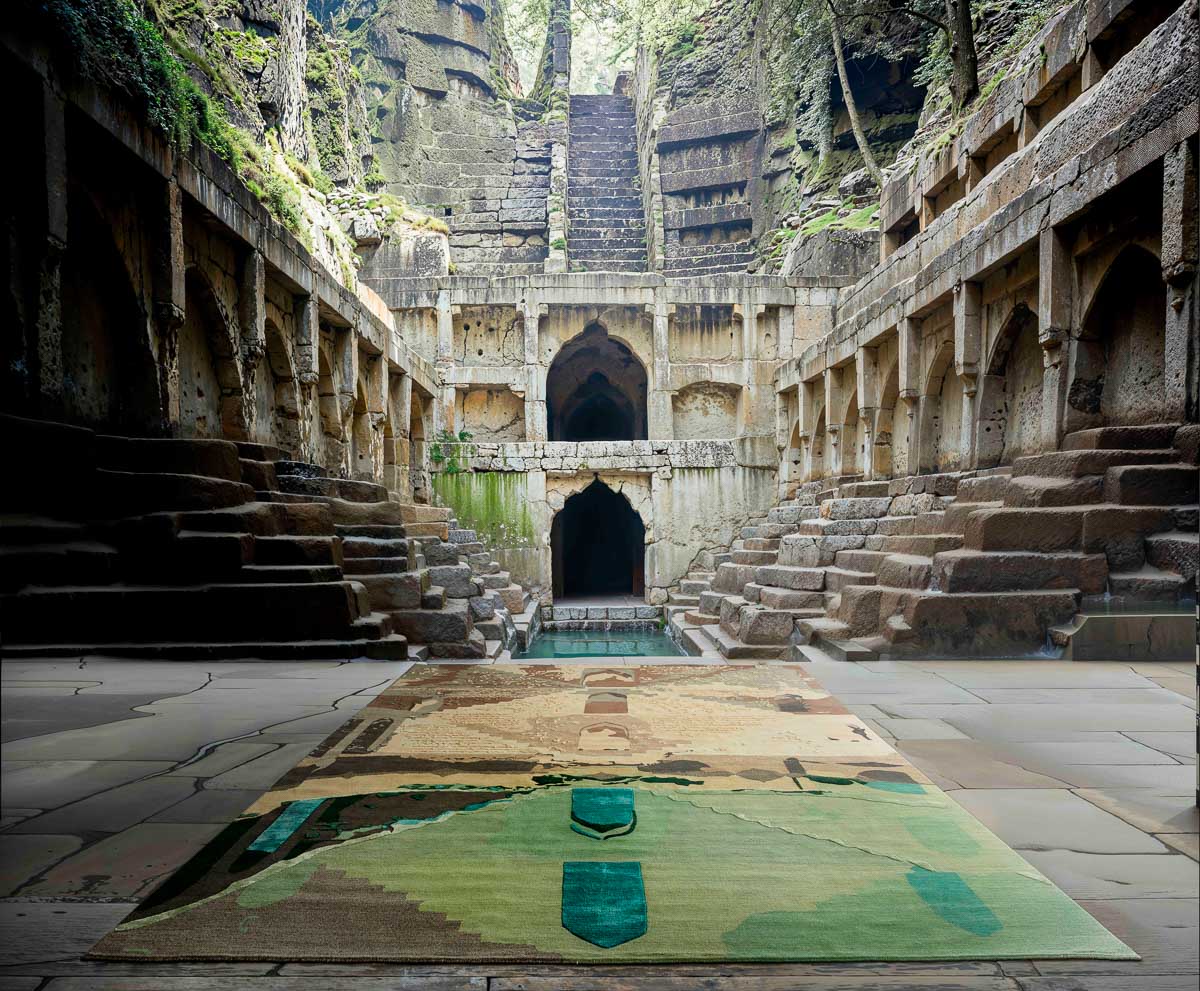
For our first exclusive rug collection produced by cc-tapis, Shalini Misra looked to the thousands of stepwells in India for inspiration.
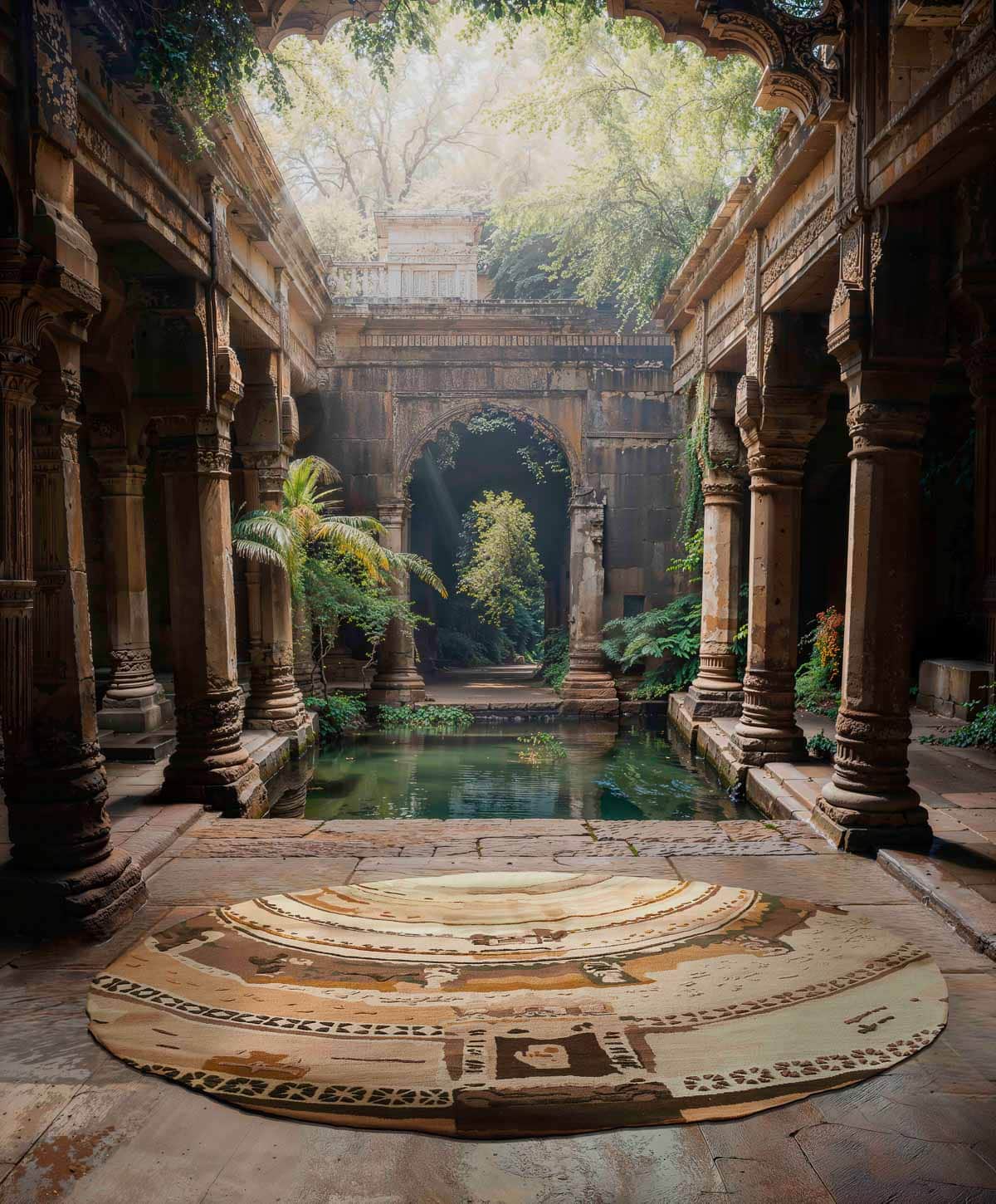
What are stepwells and what do they represent?
For our first exclusive rug collection produced by cc-tapis, Shalini Misra looked to the thousands of stepwells in India for inspiration. Usually referred to as a ‘Vav’ or, ‘Baoli’ in Rajasthan, the stepwells are a vital component of India’s architectural, cultural, and social history.
Historically, stepwells were renowned as India’s most efficient water-harvesting systems, acting as reservoirs while also doubling up as unifying spiritual centres, social gathering spots and a place of refuge for ritual purification and prayer. For women in particular they were a safe haven, offering protection and shelter from the overpowering heat as they fetched water for the community.
Though stepwells are disappearing and deserted due to modernisation, governmental and heritage organisations are striving to conserve the architectural phenomenon – something that we at Curio are passionate about.

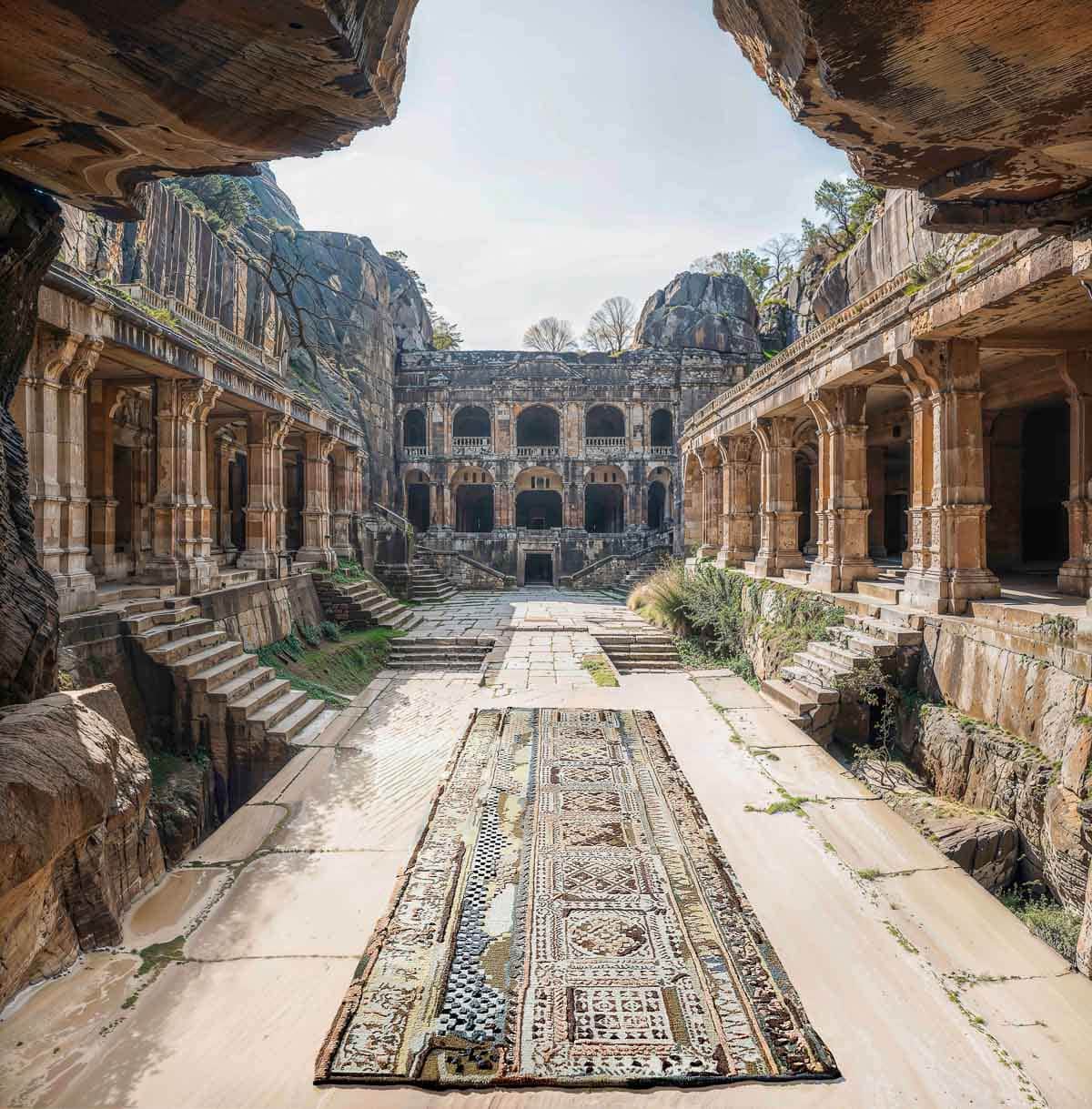
Why did we choose cc-tapis to produce the limited-edition rugs?
cc-tapis has a strong respect for natural materials, which is reflected in its eco-friendly approach to production. Each rug is made using the finest natural Himalayan wool and sourced from the surrounding areas of the studio’s atelier in Kathmandu, Nepal. No machines are used and everything is handmade by expert artisans following ancient traditional techniques.
Each rug passes through many hands. The raw materials are first carded and hand-spun by one team, dyed by a master colour expert, knotted by Tibetan artisans and finished by a team of expert craftspeople who shave, trim and bind the final piece.
cc-tapis also cares about its people, practices and impact on our world, undertaking a path of transversal reduction through its production and distribution processes, whilst paying attention to social, human, and economic factors. They also launched the non-profit organisation cc-for education which provides the children of Nepalese weavers private education. From launching plastic-free packaging using discarded clothing, to attaining carbon neutrality, cc-tapis offers much more than its soulful, high-end textiles.
How are the rugs made and how were the stepwells translated onto the materials?
The complex and ancient production method of hand-knotting is favoured by the atelier – a common technique in the Middle East, India and China. Every stage of production is managed in-house, from refining raw materials to dying processes, enabling full control to create unique, bespoke pieces. Every Tibetan knot is handmade on a vertical loom holding a warp made of hundreds of stretched strands of cotton. A single rug can have up to 232.000 individual knots per square meter, indicative of the lengthy production time which ranges between 14 to 17 weeks depending on the quality and size. Once the knotting is complete, the rug undergoes extensive finishing processes including hand-cutting, shearing and embossing. The final piece is washed in recycled rainwater, stretched, and sun-dried in the Himalayan sun.
The images of Indian stepwells are translated onto the rugs by weaving exceptionally delicate gradients of hand-dyed Himalayan wool. To evoke a surreal and sculptural effect, cc-tapis’ Nepalese artisans integrate different pile heights, textures and an original combination of colours to define the varying levels of stepwells and elaborate carvings – thoughtful craftsmanship at its finest.
What does this collection mean to Curio?
Curio is rooted in community. We nurture, spotlight and celebrate under-represented talent all across the globe to bring to market out-of-the-ordinary artists and makers. Here, we want to celebrate the talented Nepalese artisans and tight-knit team who soulfully stitch each bespoke piece.
Rugs, as functional and textural foundations, have a unifying power, serving to bring people together and act as grounding elements for both entertaining and everyday living. This draws parallels with the historical use of stepwells; the fundamental heart of community.
January 31, 2024
To mark the launch of our exclusive rug collection by Shalini Misra, produced by cc-tapis, we organised a little fireside chat with Shalini and cc-tapis’ founder, Fabrizio Cantoni. Together they dive into the cultural significance of stepwells, the creative process, and the intricate production methods that give each piece its unique soulful character.
Shalini, what drew you to the stepwells of India as a source of inspiration?
The stepwells of India, known as ‘Vav’ or ‘Baoli,’ are an integral part of the country’s cultural and architectural history. Their historical significance, acting as water-harvesting systems and spiritual centres, deeply inspired me. They also served as safe havens, particularly for women fetching water, reflecting a rich cultural tapestry that I wanted to honour in the collection.
Shalini, why did you choose cc-tapis to produce the limited-edition rugs?
cc-tapis stood out for its commitment to craftsmanship and eco-friendly practices. With a deep respect for natural materials and an emphasis on handmade techniques, they aligned perfectly with the vision for this collection. Their dedication to social and environmental responsibility, as seen through initiatives like cc-for education, really resonate with Curio’s values.
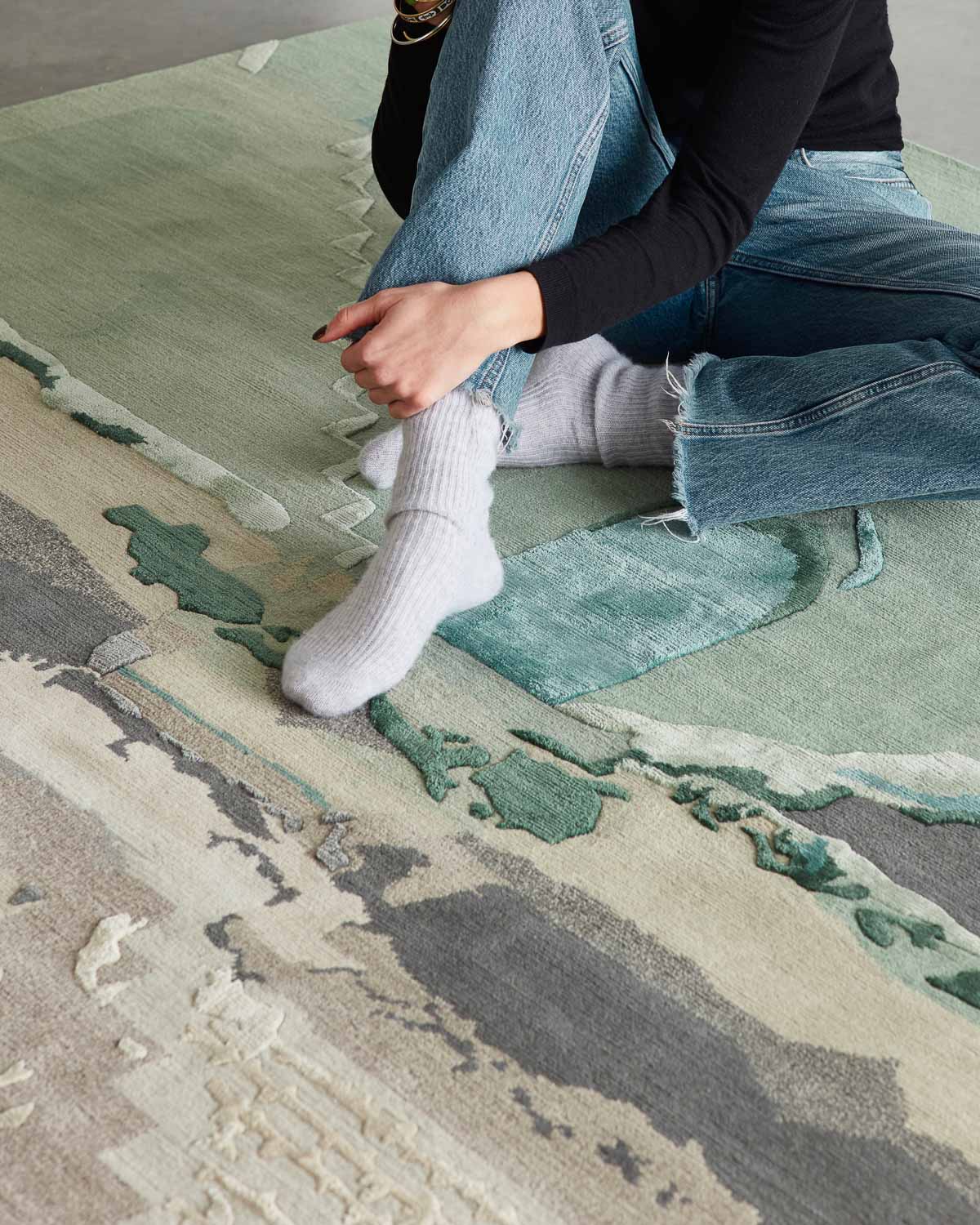
Fabrizio, could you describe the step-by-step production process and any special techniques used?
The handknotting technique is at the core of our production process, a method common in the Middle East, India, and China. From refining raw materials to dying processes, every stage is managed in-house. Our artisans pour everything into each rug. Pieces can include up to 232,000 individual knots per square meter. The finishing processes, including hand-cutting and embossing, contribute to the exceptional quality.
How long does each piece take to make, and how many artisans are needed to create one?
The production time varies, but on average, each piece takes 14 to 17 weeks to complete. A team of skilled artisans work closely together to ensure the rugs meet our exceptional and responsible standards.
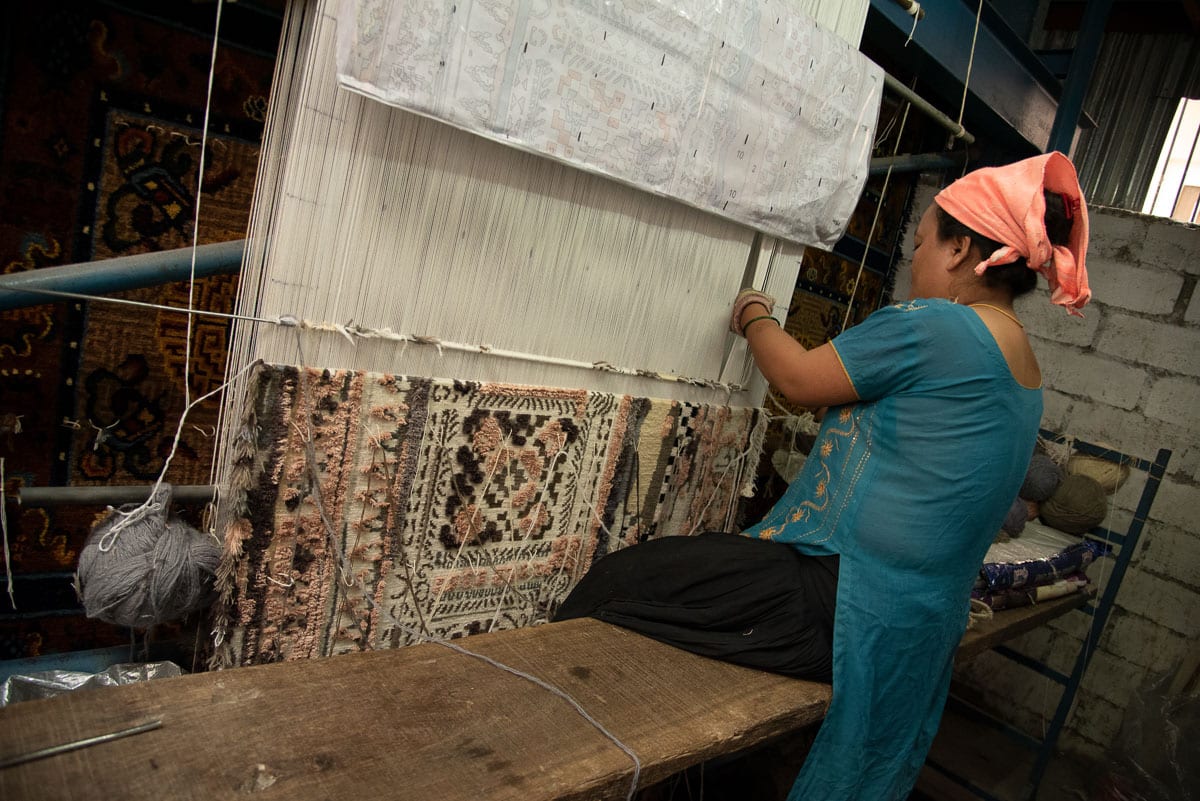
How were the stepwells translated onto the materials?
The images of Indian stepwells are translated onto the rugs through delicate gradients of hand-dyed Himalayan wool. Our Nepalese artisans integrate different pile heights, textures, and an original combination of colours to define the varying levels of stepwells and elaborate carvings.
Sustainability has become an overused term across interiors and fashion industries. How is cc-tapis practicing responsible design?
cc-tapis prioritises sustainability through the use of ethically sourced materials and eco-friendly production practices. Our commitment goes beyond words – from using plastic-free packaging to achieving carbon neutrality. And, through our non-profit organisation cc-for education, we’re not just designing rugs; we’re creating a positive impact. It’s our way of weaving responsible design into every thread of our work.
Shalini, what does this collection mean to Curio?
Shalini: This collection holds profound meaning for Curio as it celebrates the talent of Nepalese artisans and the collaborative spirit within our tight-knit team. It is a testament to our commitment to spotlighting under-represented artists globally and bringing unique, meaningful pieces to the market.
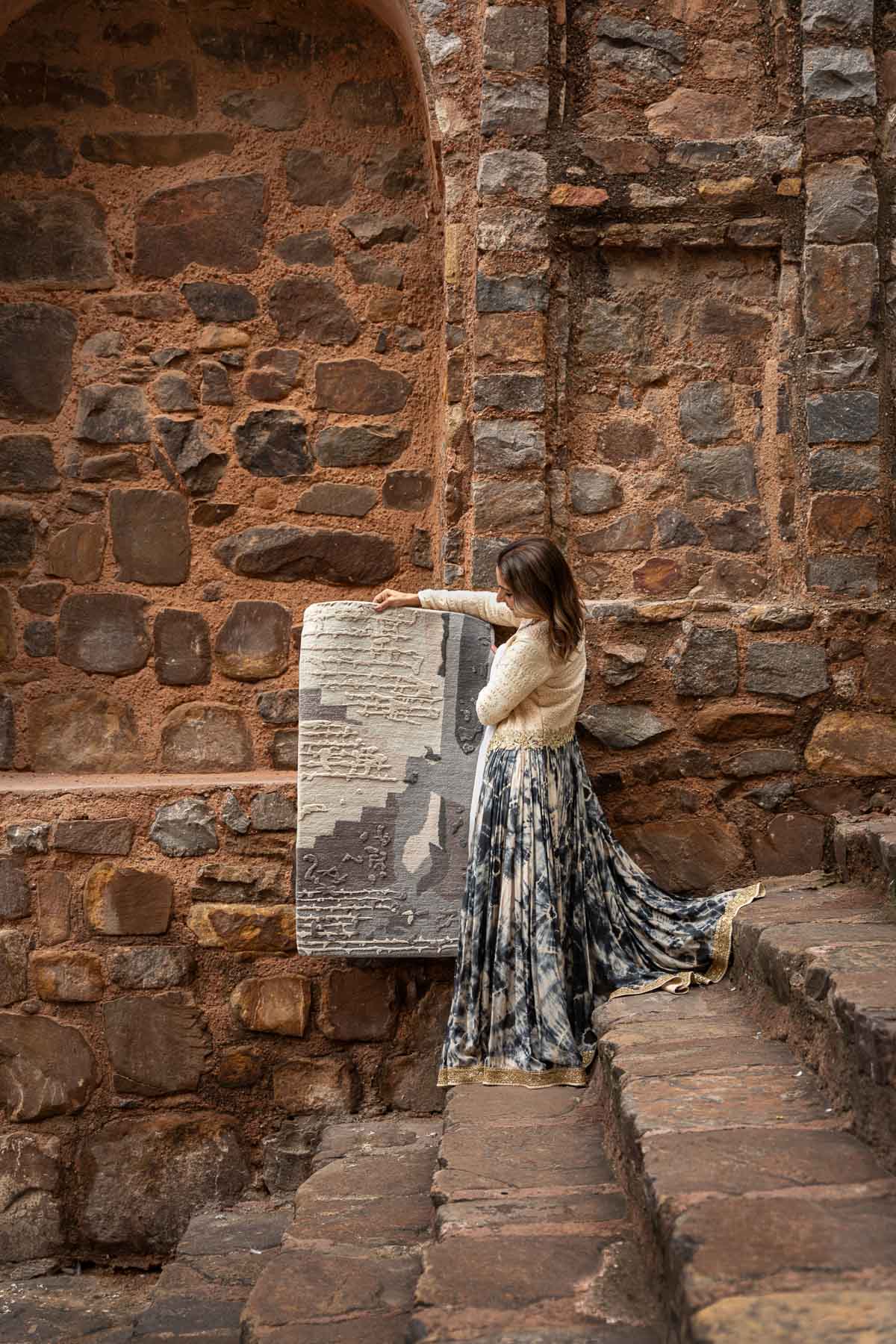
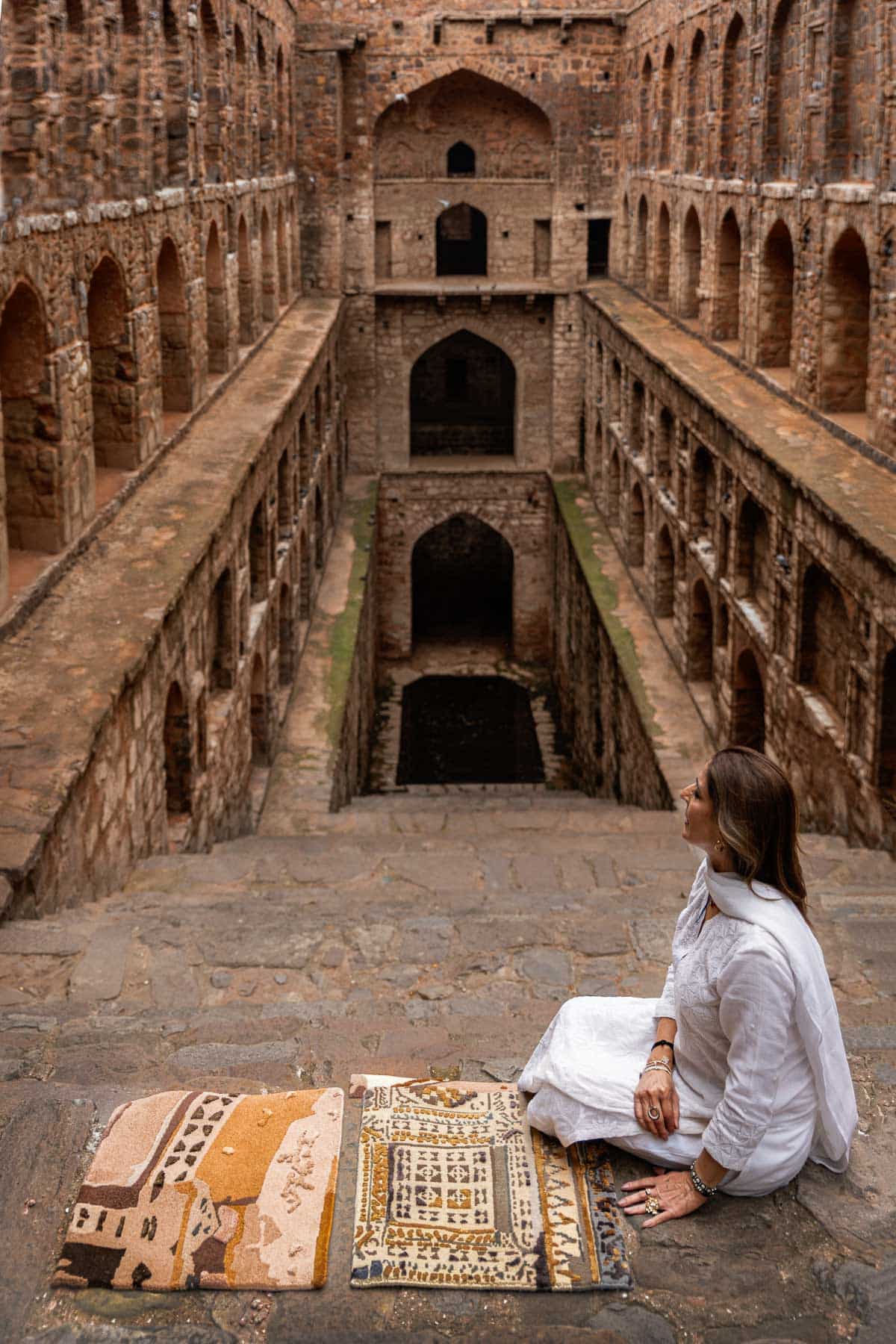
Do either of you have a favorite piece from the collection?
Shalini: Each rug is special, but if I had to choose, I’m particularly fond of Ujala for its embodiment of the stepwell’s arch-shaped niches. I’m also drawn to the contrasting blue and grey tones.
Fabrizio:
“I love all of them. I can’t just mention one, as each rug has its own distinct personality. We have developed the collection working closely with Shalini, pushing our production processes to be sure that the images of Indian stepwells were tangible in each design. I couldn’t be happier with the final result.”
To read more about the rugs, read our article here [link to article]
January 31, 2024
AD Middle East
Diwali 2023: How To Decorate Your Home in 7 Easy Steps
You can view the full article by following the link below.
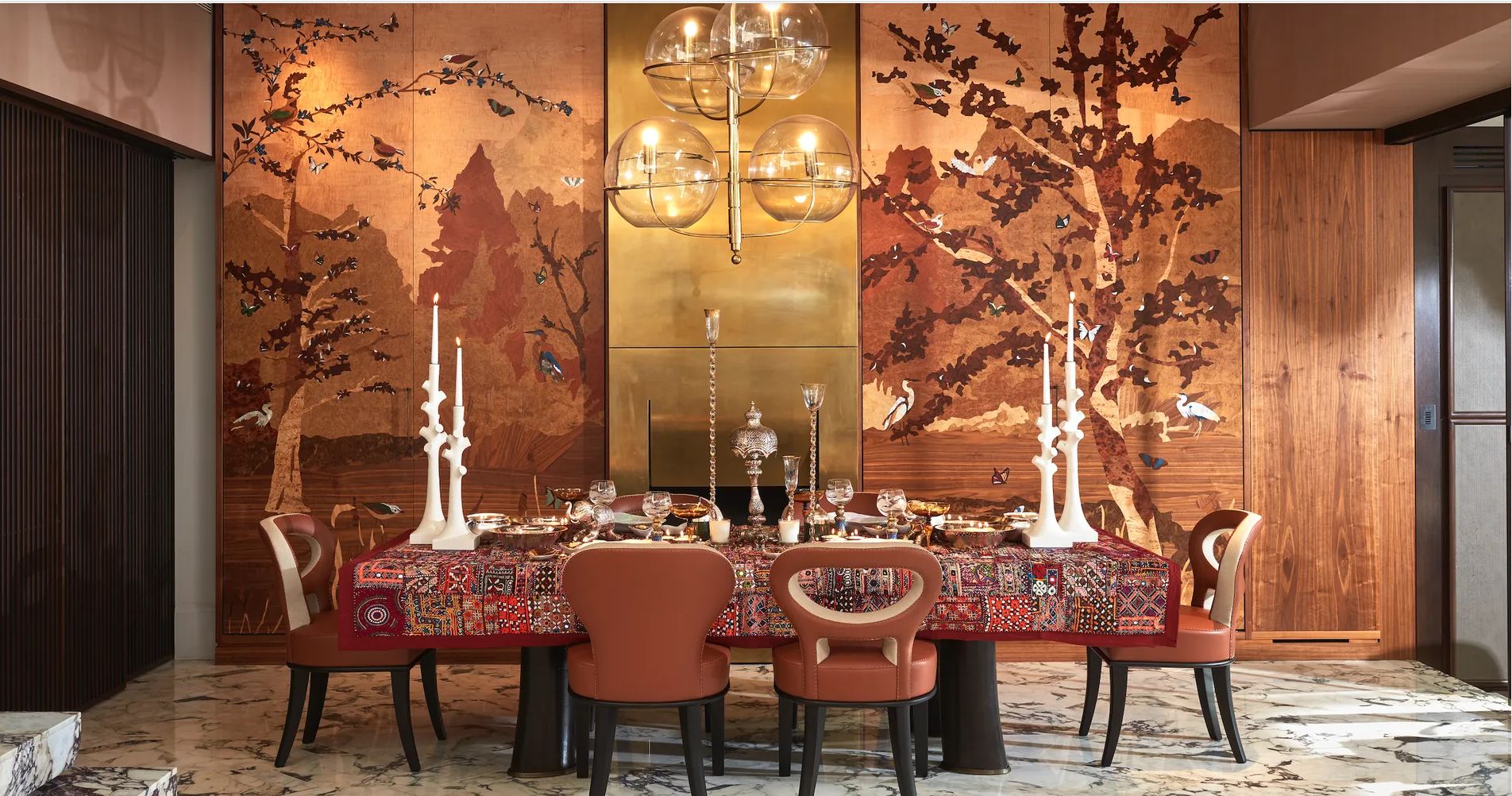
Homes & Gardens
8 Ways To Mix And Match Materials In The Home, According To Interior Designer Shalini Misra
You can view the full article by following the link below.
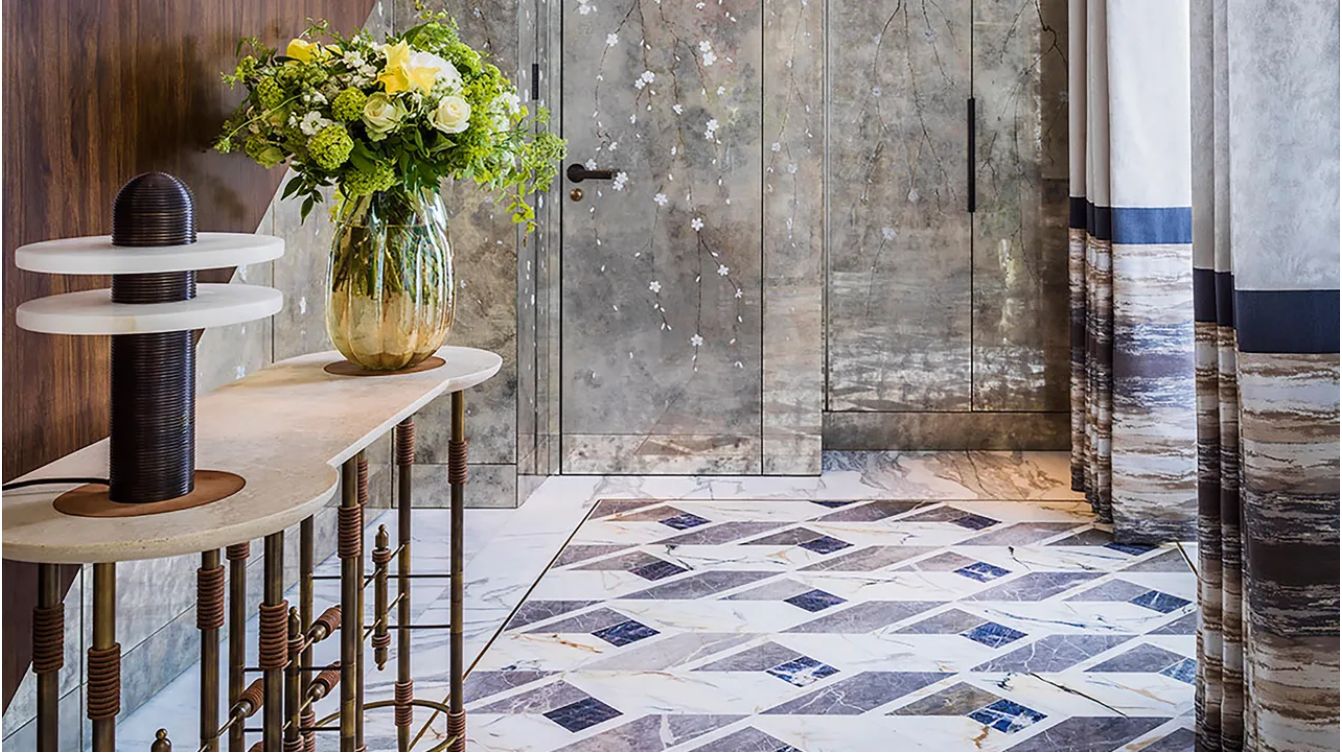
This week the V&A opens its fabulous new exhibition, Gabrielle Chanel: Fashion Manifesto.
Few would argue that Gabrielle Chanel was a true creative visionary, and in many ways she wrote the rulebook for contemporary style. Thinking of some of her most quoted wisdoms – we can’t help but notice how relevant they also are for interiors…
This could absolutely apply to the design of your house itself. Gabrielle Chanel always believed it is better to be underdressed. Accessories are key – but it’s easy to overdo it. After you’ve styled your room, think about removing one display item, and see the difference it makes.
Again, a timeless truth. Surround yourself with the things you love, and beyond that, with very best you can afford.
“The best things in life are free. The second best are very expensive.”
“Fashion is not something that exists in dresses only. Fashion is in the sky, in the street, fashion has to do with ideas, the way we live, what is happening.”
Just swap out fashion for design and dresses for rooms and you have our approach in a nutshell. Widen your view: your surroundings don’t simply define your tastes, they can be an expression of your whole world.
Similar to that often-repeated phrase from Mies Van Der Rohe ‘Less is more’ – but we much prefer Chanel’s take.
“Simplicity is the keynote of all true elegance.”
Similar to that often-repeated phrase from Mies Van Der Rohe ‘Less is more’ – but we much prefer Chanel’s take.
“Fashion changes, but style endures.”
When it comes to interiors, the distinction between fashion and style is important. As a design practice we seek to make sustainable choices wherever possible, and that means building in longevity.
Do you agree? Remember if you are searching for the perfect accessories for your space do visit Curio for elegant pieces we think she would approve of.
September 21, 2023
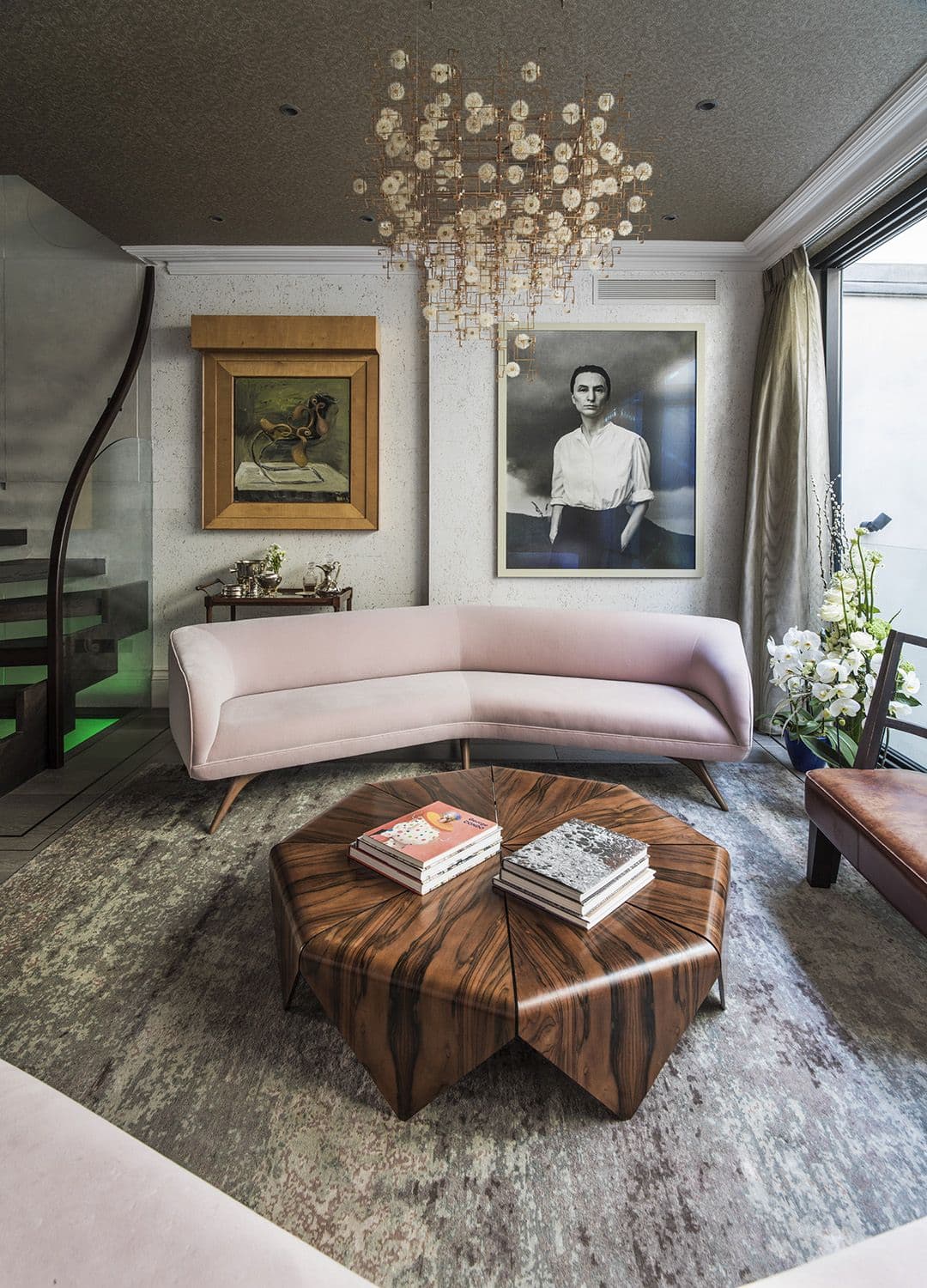
Every detail counts when it comes to designing a home, and this is especially true of the first thing many people notice when they step inside a house: the art. At Shalini Misra we believe it is the art that gives a space its soul, and for this reason our clients’ art collections are often the focal point of our designs. our aim is to create a space that is not only visually pleasing but also emotionally resonant, and while art curation can greatly enhance a space’s ambiance, truly transforming any interior scheme, but is all too often an afterthought. In this article, we will explore five key aspects of art curation in the home that will bring any space to life.
Entrances: first and last impressions
As they say, you never get a second chance to make a first impression, and nowhere is this more true than the entrance to a home. The hallway is an opportunity to set the tone for what lies beyond and should reflect the personality of the space. Consider a bold, eye-catching piece that encapsulates the essence of the interior.
Stairways: embrace vertical space
Stairways often offer unique opportunities for art curation. Vertical wall space can create a captivating visual journey, and a curated collection of framed photographs or paintings ascending along the staircase can tell a story.
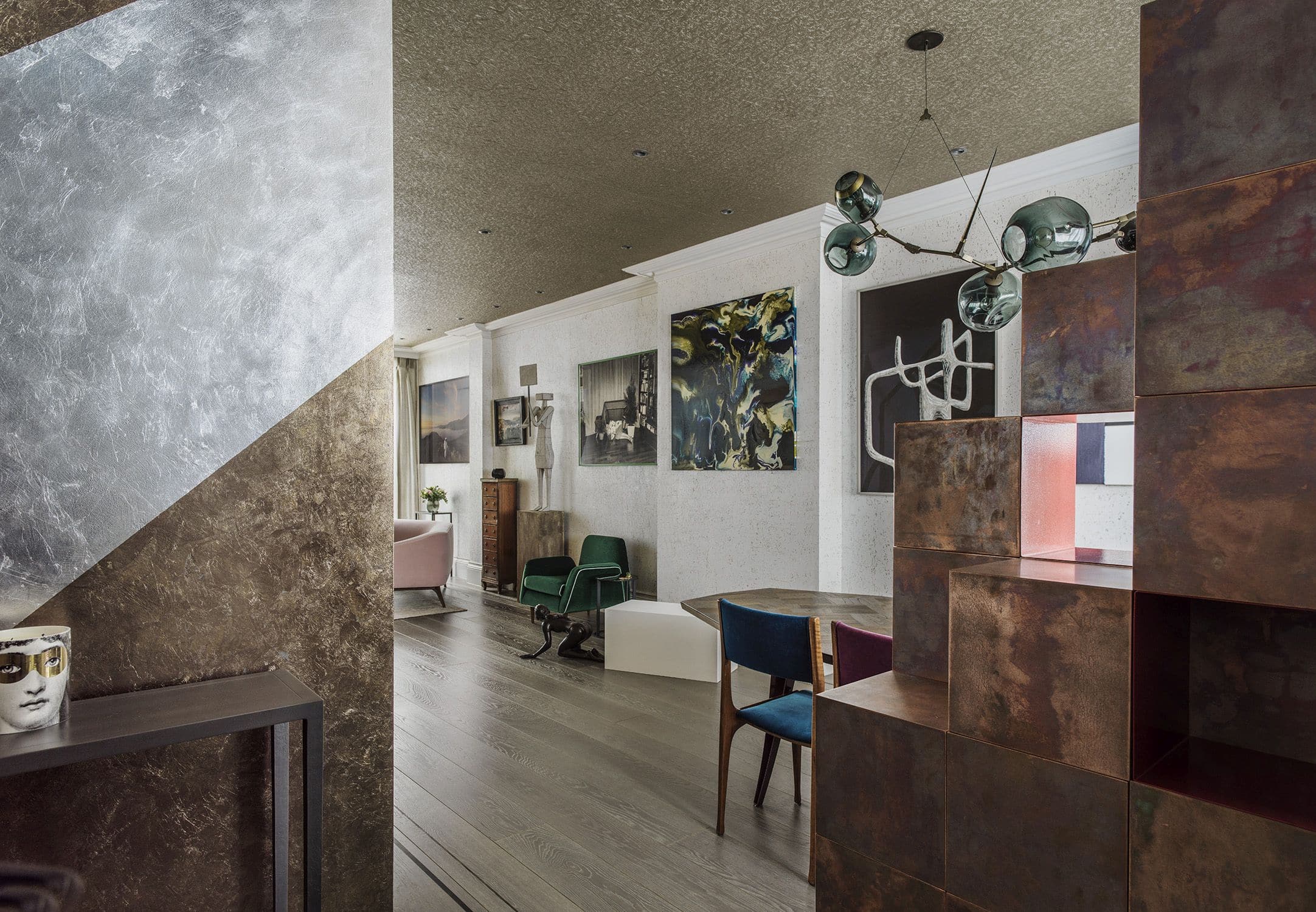
Gardens: nature and art
Sculptures, fountains, and outdoor art installations can add delight and intrigue to outdoor space, harmonising with nature, and transforming a garden into a place of both beauty and contemplation.
Statement Pieces: less is more
Sometimes, one or two statement pieces can speak volumes. When selecting these pieces, consider the emotional resonance they evoke. A striking contemporary painting, an antique sculpture, or a thought-provoking modern installation can be a conversation starter and a focal point in any room.
The Finishing Touch
Well chosen sculptures and art accessories will add layers of depth and character. Opt for pieces whose stories resonate with you personally as well as considering their fit with the overall design theme. For those seeking to explore curated art options, Shalini Misra’s sister platform, Curio, offers an exceptional array of original works to choose from.
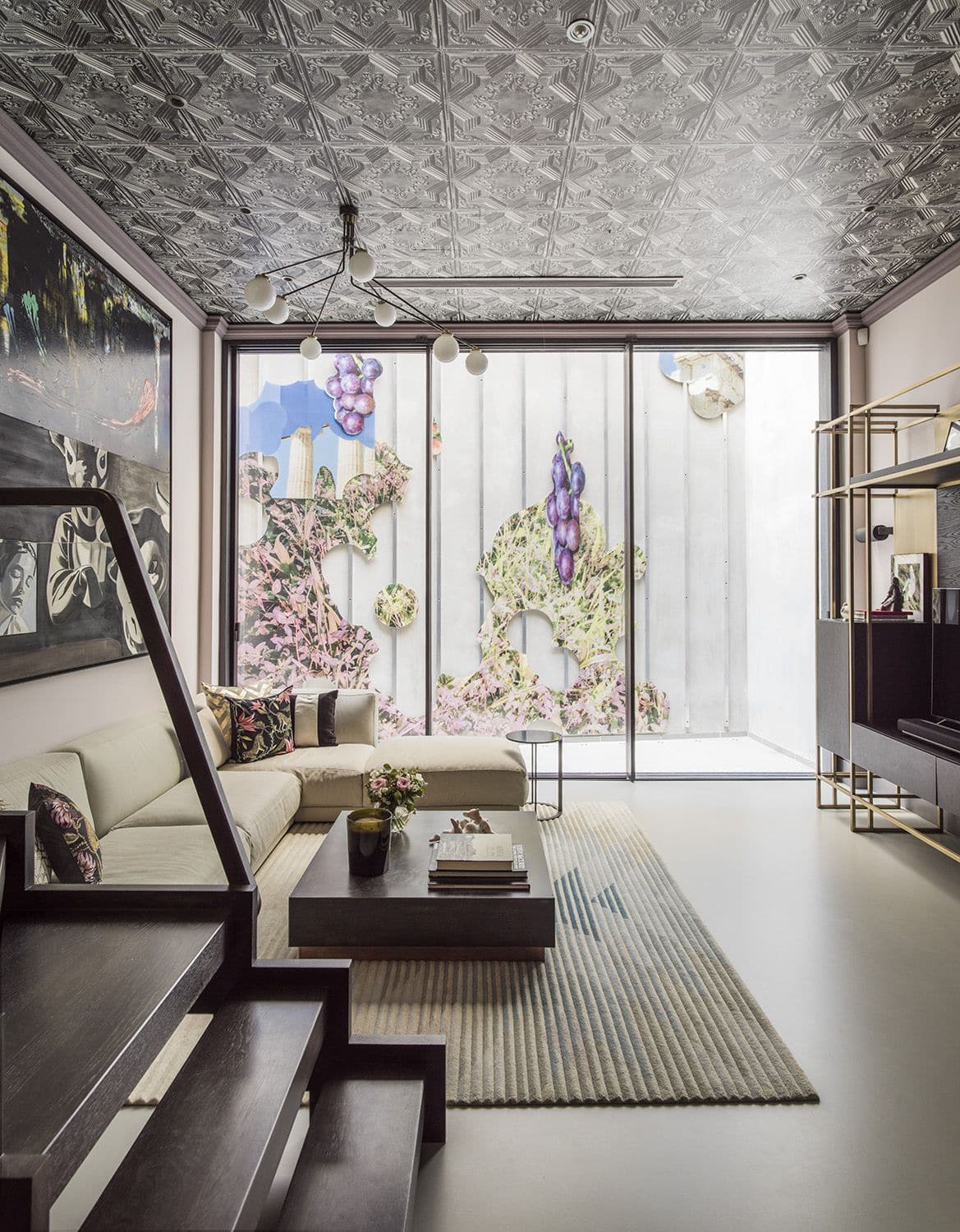
It’s somewhat ironic that art curation in interior design can seem to be an art form in itself. When approached with thought and consideration, it can imbue a home with elegance and personality, making a focal point of creativity and beauty, and bringing colour and material palettes together. By focusing on entrances, stairways, gardens, statement pieces, and art accessories, it’s possible to create a curated space that continuously uplifts and inspires its occupants on a daily basis.
September 8, 2023


